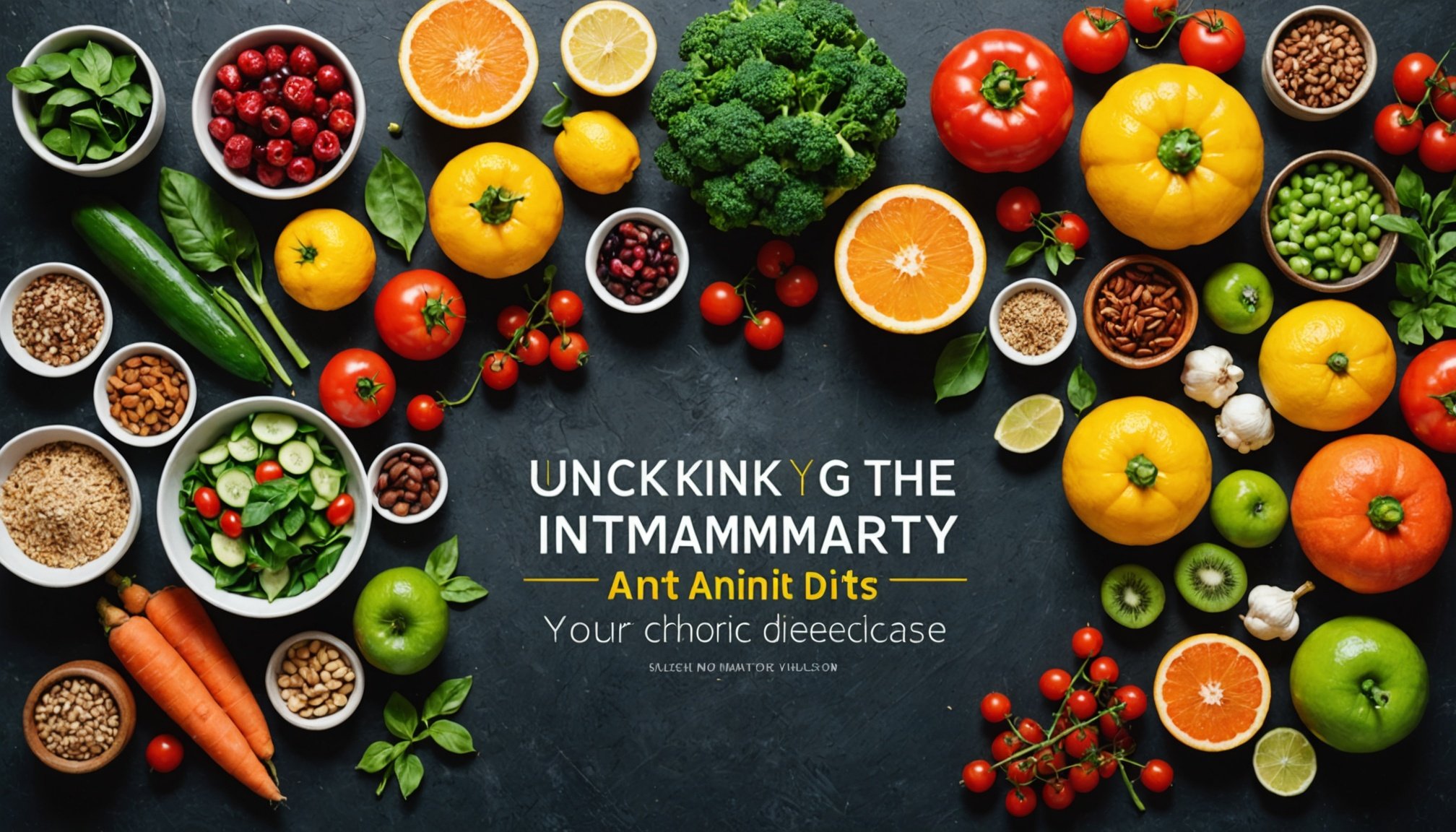Unlocking the Power of Anti-Inflammatory Diets: Your Ultimate Guide to Managing Chronic Diseases Effectively
Managing chronic diseases, such as arthritis, fibromyalgia, and chronic pain, can be a daunting task, but there is a powerful tool that can significantly alleviate symptoms and improve your overall health: the anti-inflammatory diet. In this comprehensive guide, we will delve into the world of anti-inflammatory nutrition, exploring how specific foods and dietary strategies can help reduce inflammation, ease pain, and enhance your quality of life.
Understanding Inflammation
Inflammation is a natural response of your body’s immune system, designed to protect against injury and infection. However, when this response becomes chronic, it can lead to a variety of health issues, including chronic pain, arthritis, and even diseases like heart disease and diabetes.
Also to discover : Exploring the transformative role of community-driven research in bridging health disparities
Acute vs. Chronic Inflammation
Acute inflammation is a short-term response that helps your body heal from injuries or infections. It is characterized by symptoms like swelling, redness, and pain, but it resolves once the underlying issue is addressed. Chronic inflammation, on the other hand, is a persistent and ongoing process that can damage healthy tissues and cause continuous pain.
Conditions such as rheumatoid arthritis, fibromyalgia, and chronic lower back pain often involve chronic inflammation. While medications and therapies are crucial components of pain management, emerging research highlights the significant impact of dietary choices on inflammation levels and pain perception[1][2][5].
In parallel : Revolutionizing emergency medical services: the promises and pitfalls of autonomous vehicles
The Diet-Inflammation Connection
The foods you eat play a critical role in either exacerbating or reducing inflammation. Diets rich in added sugars, unhealthy fats, and processed foods are linked to increased levels of inflammatory markers. In contrast, a diet focused on unprocessed foods and anti-inflammatory nutrients can help lower these markers and alleviate pain symptoms.
Foods That Promote Inflammation
It is essential to identify and limit or avoid foods that fuel inflammation. These include:
- Processed Foods: Packaged snacks, frozen meals, and other processed foods are high in unhealthy fats, sugars, and preservatives.
- Sugary Drinks: Beverages like soda, sports drinks, and sweetened teas or coffees.
- Refined Carbohydrates: White bread, sugary cereals, and other refined grains.
- Processed Meats: Foods like hot dogs, sausages, and bacon.
Foods That Reduce Inflammation
Incorporating the following foods into your diet can help combat inflammation:
- Omega-3 Fatty Acids: Found in fatty fish (salmon, mackerel), walnuts, and flaxseeds, these healthy fats are potent anti-inflammatory agents[1][3][4].
- Antioxidants: Vegetables and fruits rich in vitamins A, C, and E, such as leafy greens (spinach, kale), berries (blueberries, strawberries), and cruciferous vegetables (broccoli, Brussels sprouts).
- Phytonutrients: Compounds found in plant-based foods like turmeric, ginger, and berries have natural anti-inflammatory properties.
- Healthy Fats: Olive oil, avocados, nuts, and seeds are excellent alternatives to saturated fats.
- Whole Grains: Brown rice, quinoa, oats, and barley are rich in fiber and help support digestion and reduce inflammatory markers.
- Plant-Based Proteins: Legumes, nuts, and seeds are great alternatives to red meat and include foods like lentils, chickpeas, almonds, and chia seeds.
Practical Dietary Strategies
Making sustainable dietary changes can feel overwhelming, but with a step-by-step approach, you can integrate anti-inflammatory foods into your daily life.
Start Small
Begin by replacing one inflammatory food item with an anti-inflammatory option each week. For example, swap white bread for whole grain bread or choose olive oil instead of butter for cooking.
Experiment with Recipes
Explore dishes that emphasize fresh, whole ingredients. Try new recipes that incorporate anti-inflammatory foods like turmeric, ginger, and fatty fish.
Stay Hydrated
Drinking plenty of water promotes overall health and aids in flushing out toxins. Aim for at least eight glasses of water a day.
Consult a Professional
Work with a nutritionist or healthcare provider to tailor dietary changes to your specific needs. They can help you create a personalized meal plan that addresses your health goals.
Benefits Beyond Pain Management
An anti-inflammatory diet offers numerous benefits that extend beyond pain management:
Improved Heart Health
A diet rich in anti-inflammatory foods can lower cholesterol levels and reduce the risk of cardiovascular diseases. Foods like fatty fish, olive oil, and whole grains contribute to improved heart health[1][3][5].
Better Blood Sugar Control
Eating a diet high in fiber and antioxidants can help regulate blood sugar levels, reducing the risk of type 2 diabetes. Foods like beans, whole grains, and fruits are particularly beneficial[1][3][5].
Enhanced Gut Health
Fiber-rich foods promote a healthy gut microbiome, which is crucial for overall health. Include foods like yogurt, cottage cheese, asparagus, bananas, and chicory to support gut health[3].
The Mediterranean Diet: A Sustainable Approach
Following a Mediterranean-style diet is a sustainable and enjoyable way to lower inflammation naturally. This diet emphasizes:
- Fruits and Vegetables: A variety of colorful fruits and vegetables.
- Whole Grains: Brown rice, quinoa, oats, and whole wheat bread.
- Healthy Fats: Olive oil, avocados, nuts, and seeds.
- Lean Proteins: Fatty fish, poultry, and plant-based proteins like legumes.
- Herbs and Spices: Turmeric, ginger, garlic, and cinnamon.
This diet is not only delicious but also provides a balanced and nutrient-dense approach to reducing inflammation and managing chronic diseases[4].
Exercise and Its Impact
While diet is a crucial component of managing inflammation, regular physical activity also plays a significant role.
Reducing Chronic Inflammation
Exercise can cause temporary inflammation, but regular physical activity helps reduce chronic inflammation over time. Aim for at least 150 minutes of moderate exercise weekly, including activities like brisk walking, swimming, or yoga. For those experiencing joint pain or stiffness, focus on low-impact exercises to stay active without straining your body[4].
Combining Dietary Changes with Other Healthy Lifestyle Modifications
Adopting a holistic approach to chronic pain management is key to achieving lasting relief.
A Balanced Lifestyle
Combining dietary changes with other healthy lifestyle modifications amplifies the benefits of a nutritious diet. Here are some tips:
- Regular Exercise: Incorporate physical activity into your daily routine.
- Stress Management: Practice stress-reducing techniques like meditation, yoga, or deep breathing exercises.
- Adequate Sleep: Ensure you get 7-8 hours of sleep per night to help your body repair and heal.
- Chiropractic Care: Consider chiropractic care to align your spine and reduce pressure on joints.
“Generally, adopting an overall healthy lifestyle will amplify the benefits of a nutritious diet in managing chronic pain. It is never too early or too late to make healthier choices, as even small changes can lead to significant improvements in pain and quality of life,” says Thomas M. Holland, MD, MS[2].
Real-Life Examples and Success Stories
Many individuals have found significant relief from chronic pain by adopting an anti-inflammatory diet.
Case Study: Managing Rheumatoid Arthritis
Sarah, a 45-year-old woman, was diagnosed with rheumatoid arthritis. She experienced severe joint pain and stiffness, which significantly impacted her daily life. After consulting with a nutritionist, Sarah started an anti-inflammatory diet that included plenty of fruits, vegetables, whole grains, and healthy fats. She also incorporated turmeric and ginger into her meals. Within a few months, Sarah noticed a significant reduction in her pain levels and improved mobility. “I feel like I’ve got my life back,” she said. “The changes were simple, but the impact has been profound.”
Tips for Sustainable Dietary Changes
Making lasting dietary changes requires a thoughtful and gradual approach.
Start with Small Changes
Replace one unhealthy food item with a healthier option each week. For example, if you typically have white bread for breakfast, switch to whole grain bread.
Keep It Simple
Focus on whole, unprocessed foods rather than relying on supplements or complicated recipes.
Stay Informed
Read labels and understand what you are eating. Avoid foods with added sugars, unhealthy fats, and preservatives.
Seek Support
Work with a healthcare provider or nutritionist to create a personalized meal plan. Join a support group or find a friend who is also making dietary changes to stay motivated.
Embracing an anti-inflammatory diet is a powerful step towards managing chronic diseases effectively. By understanding the connection between diet and inflammation, incorporating anti-inflammatory foods, and adopting a holistic approach to health, you can significantly reduce pain, improve your overall health, and enhance your quality of life.
Key Takeaways
- Focus on Whole Foods: Emphasize fruits, vegetables, whole grains, healthy fats, and plant-based proteins.
- Limit Processed Foods: Avoid sugary drinks, refined carbohydrates, and processed meats.
- Stay Hydrated: Drink plenty of water to support overall health.
- Combine with Healthy Lifestyle Modifications: Regular exercise, stress management, and adequate sleep are crucial for overall well-being.
- Seek Professional Guidance: Work with a nutritionist or healthcare provider to tailor dietary changes to your needs.
By making these changes, you are not just managing symptoms; you are taking control of your health and unlocking a path to a healthier, happier you.
Detailed Bullet Point List: Foods to Include and Avoid
Foods to Include:
- Omega-3 Fatty Acids: Fatty fish (salmon, mackerel), walnuts, flaxseeds
- Antioxidants: Leafy greens (spinach, kale), berries (blueberries, strawberries), cruciferous vegetables (broccoli, Brussels sprouts)
- Phytonutrients: Turmeric, ginger, berries
- Healthy Fats: Olive oil, avocados, nuts, seeds
- Whole Grains: Brown rice, quinoa, oats, barley
- Plant-Based Proteins: Legumes, nuts, seeds
- Gut-Healthy Foods: Yogurt, cottage cheese, asparagus, bananas, chicory
- Spices with Anti-Inflammatory Properties: Turmeric, ginger, garlic, cinnamon
Foods to Avoid:
- Processed Foods: Packaged snacks, frozen meals
- Sugary Drinks: Soda, sports drinks, sweetened teas or coffees
- Refined Carbohydrates: White bread, sugary cereals
- Processed Meats: Hot dogs, sausages, bacon
- Foods High in Added Sugars: Candy, baked goods
- Foods High in Unhealthy Fats: Fried foods, foods with trans fats
Comprehensive Table: Comparing Anti-Inflammatory Diets
| Dietary Component | Mediterranean Diet | Plant-Based Diet | General Anti-Inflammatory Diet |
|---|---|---|---|
| Primary Focus | Emphasizes whole grains, healthy fats, fruits, vegetables, and lean proteins | Focuses on plant-based foods, excluding animal products | Aims to reduce inflammation through whole, unprocessed foods |
| Key Foods | Olive oil, avocados, nuts, seeds, fatty fish, whole grains | Legumes, nuts, seeds, whole grains, fruits, vegetables | Omega-3 fatty acids, antioxidants, phytonutrients, healthy fats |
| Foods to Avoid | Processed foods, sugary drinks, refined carbohydrates | All animal products, processed foods | Processed foods, sugary drinks, refined carbohydrates, processed meats |
| Health Benefits | Reduces heart disease risk, improves blood sugar control, enhances gut health | Lowers risk of chronic diseases, supports weight management | Reduces chronic inflammation, alleviates pain symptoms, improves overall health |
| Ease of Adoption | Moderate; requires some planning but is generally sustainable | Can be challenging for those accustomed to animal products | Moderate; involves gradual changes to dietary habits |
Quotes from Experts
- “Dietary quality is going to influence pain directly through its effects on inflammation and oxidative processes, regardless of someone’s body composition,” – Thomas M. Holland, MD, MS[2].
- “Focusing on dietary patterns and constituents that modulate inflammation and oxidative stress may be crucial to alleviating chronic pain,” – Kiran Campbell, RDN[2].
- “Generally, adopting an overall healthy lifestyle will amplify the benefits of a nutritious diet in managing chronic pain. It is never too early or too late to make healthier choices, as even small changes can lead to significant improvements in pain and quality of life,” – Thomas M. Holland, MD, MS[2].
By integrating these insights and strategies into your daily life, you can unlock the full potential of an anti-inflammatory diet and take a significant step towards managing chronic diseases effectively.

